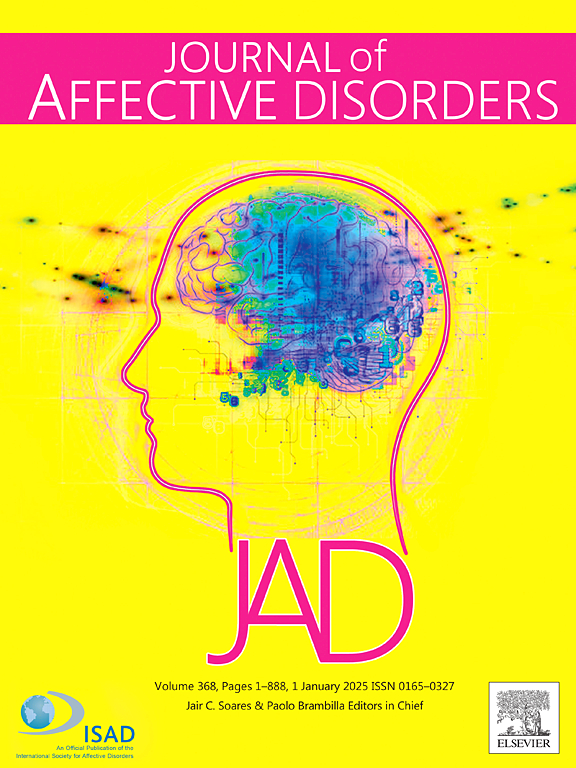Suicidal ideation among young US essential workers during the COVID-19 pandemic: A longitudinal study
IF 4.9
2区 医学
Q1 CLINICAL NEUROLOGY
引用次数: 0
Abstract
Objective
The COVID-19 pandemic exacerbated clinical distress, with essential workers among the most impacted. Rates of suicidal ideation (SI) also rose, especially among gender minorities and young adults. The present study assessed rates of SI in a large sample of US essential workers. We hypothesized relatively high rates of SI in the sample, with the highest rates noted for cisgender women and transgender individuals. We further hypothesized an inverse relationship between age and SI, such that younger adults would express higher rates of SI.
Methods
This longitudinal study recruited a convenience sample of 4136 essential workers for assessment of clinical symptoms, including SI, at four timepoints: baseline, 14-day follow-up, 30-day follow-up, and 90-day follow-up. Self-reported SI was assessed using the Patient Health Questionnaire-9. The study took place in August–December 2021.
Results
Approximately one in five (20 %–23 %) essential workers endorsed experiencing SI at least several days of the two weeks prior to assessment at all study timepoints. An inverse relationship between age and SI was revealed, with younger adults endorsing significantly higher rates of SI. Transgender participants, but not cisgender women, endorsed significantly higher rates of SI than cisgender men. No significant change in SI appeared over time.
Conclusions
While levels of SI appeared relatively high among this large sample of essential workers, transgender and young adult participants stood out for their significantly higher rates of SI. This highlights the need for mental healthcare and early interventions for those at the forefront of global crises, especially among members of vulnerable groups.
在 COVID-19 大流行期间,美国年轻医务工作者的自杀倾向:纵向研究
目的新型冠状病毒病疫情加重了临床困扰,基层医护人员受到的影响最大。自杀意念(SI)的比率也有所上升,尤其是在少数性别群体和年轻人中。目前的研究评估了大量美国基本工人的SI率。我们假设样本中SI的发生率相对较高,其中顺性女性和跨性别个体的SI发生率最高。我们进一步假设年龄和SI之间呈反比关系,即年轻的成年人会表现出更高的SI发生率。方法本纵向研究招募了4136名基本工作人员,在基线、14天随访、30天随访和90天随访四个时间点评估临床症状,包括SI。自我报告的SI使用患者健康问卷-9进行评估。该研究于2021年8月至12月进行。结果大约五分之一(20% - 23%)的基本工作人员在所有研究时间点评估前的两周内至少有几天经历了SI。年龄与SI之间呈反比关系,年轻的成年人赞成明显更高的SI率。跨性别参与者,而非顺性女性,认同的SI发生率明显高于顺性男性。SI随时间没有明显变化。结论:虽然在这一庞大的基本工作者样本中,SI的水平相对较高,但变性人和年轻的成年人参与者因其明显更高的SI率而脱颖而出。这突出表明,需要为处于全球危机最前沿的人,特别是弱势群体成员提供心理保健和早期干预。
本文章由计算机程序翻译,如有差异,请以英文原文为准。
求助全文
约1分钟内获得全文
求助全文
来源期刊

Journal of affective disorders
医学-精神病学
CiteScore
10.90
自引率
6.10%
发文量
1319
审稿时长
9.3 weeks
期刊介绍:
The Journal of Affective Disorders publishes papers concerned with affective disorders in the widest sense: depression, mania, mood spectrum, emotions and personality, anxiety and stress. It is interdisciplinary and aims to bring together different approaches for a diverse readership. Top quality papers will be accepted dealing with any aspect of affective disorders, including neuroimaging, cognitive neurosciences, genetics, molecular biology, experimental and clinical neurosciences, pharmacology, neuroimmunoendocrinology, intervention and treatment trials.
 求助内容:
求助内容: 应助结果提醒方式:
应助结果提醒方式:


